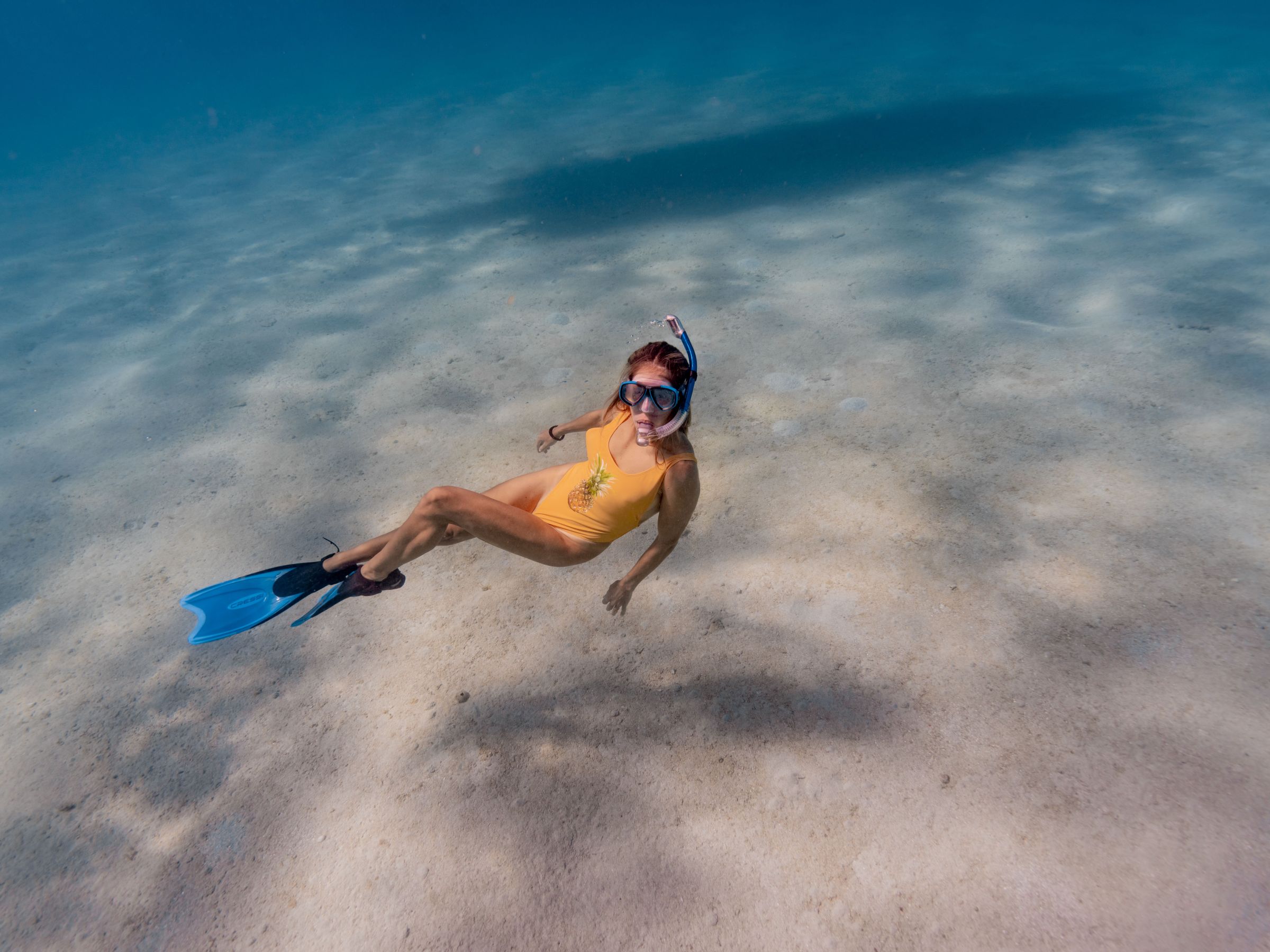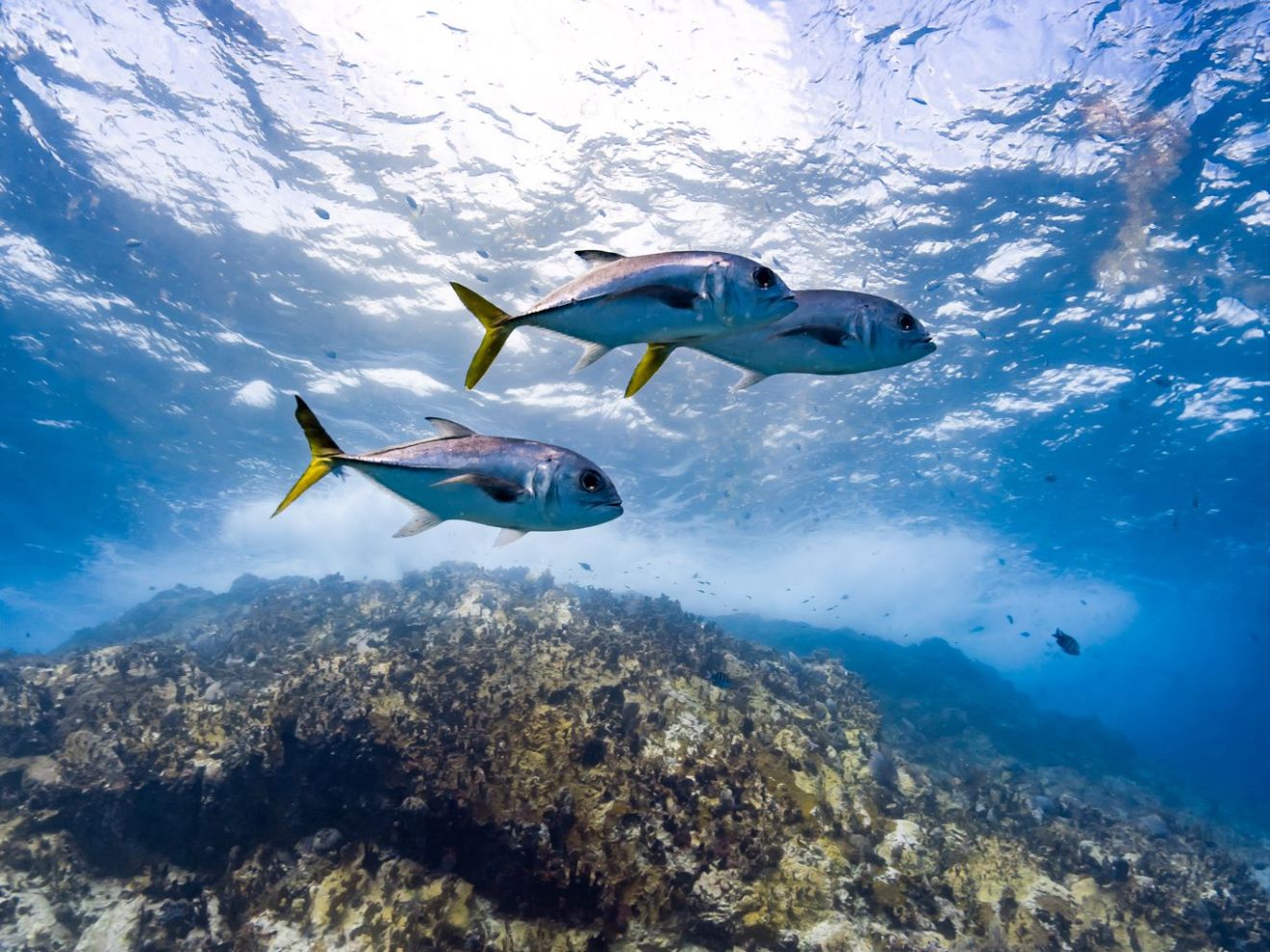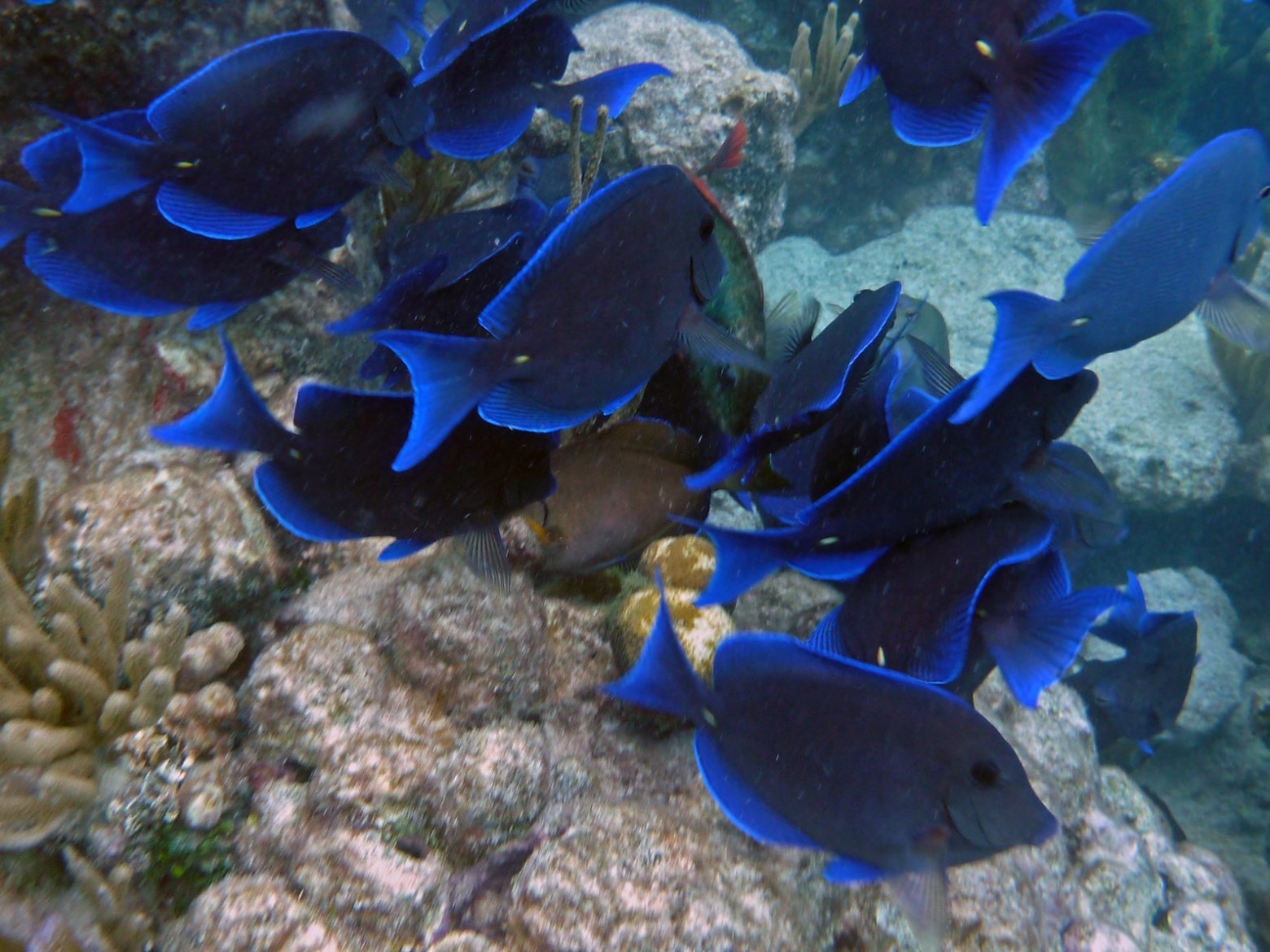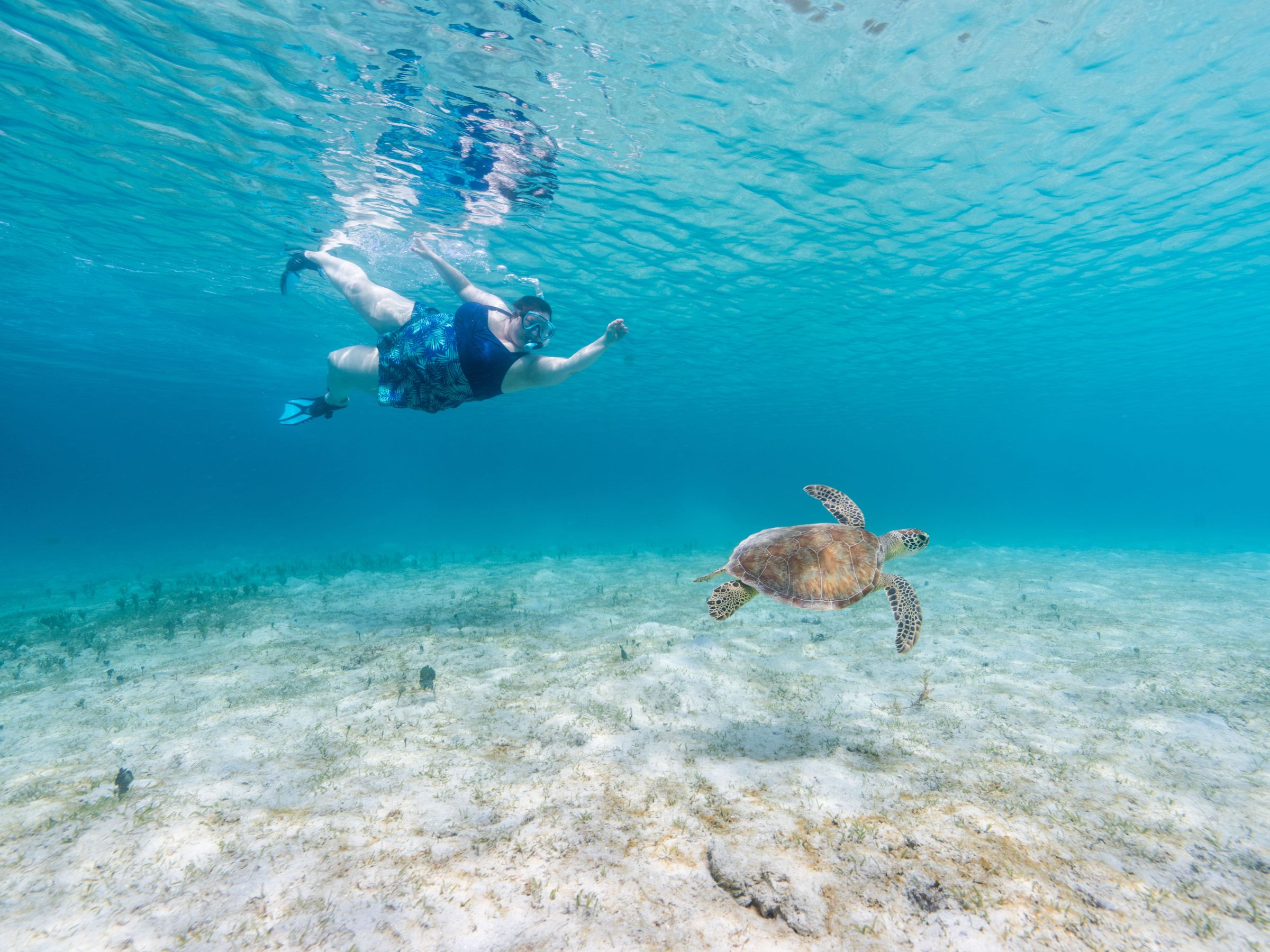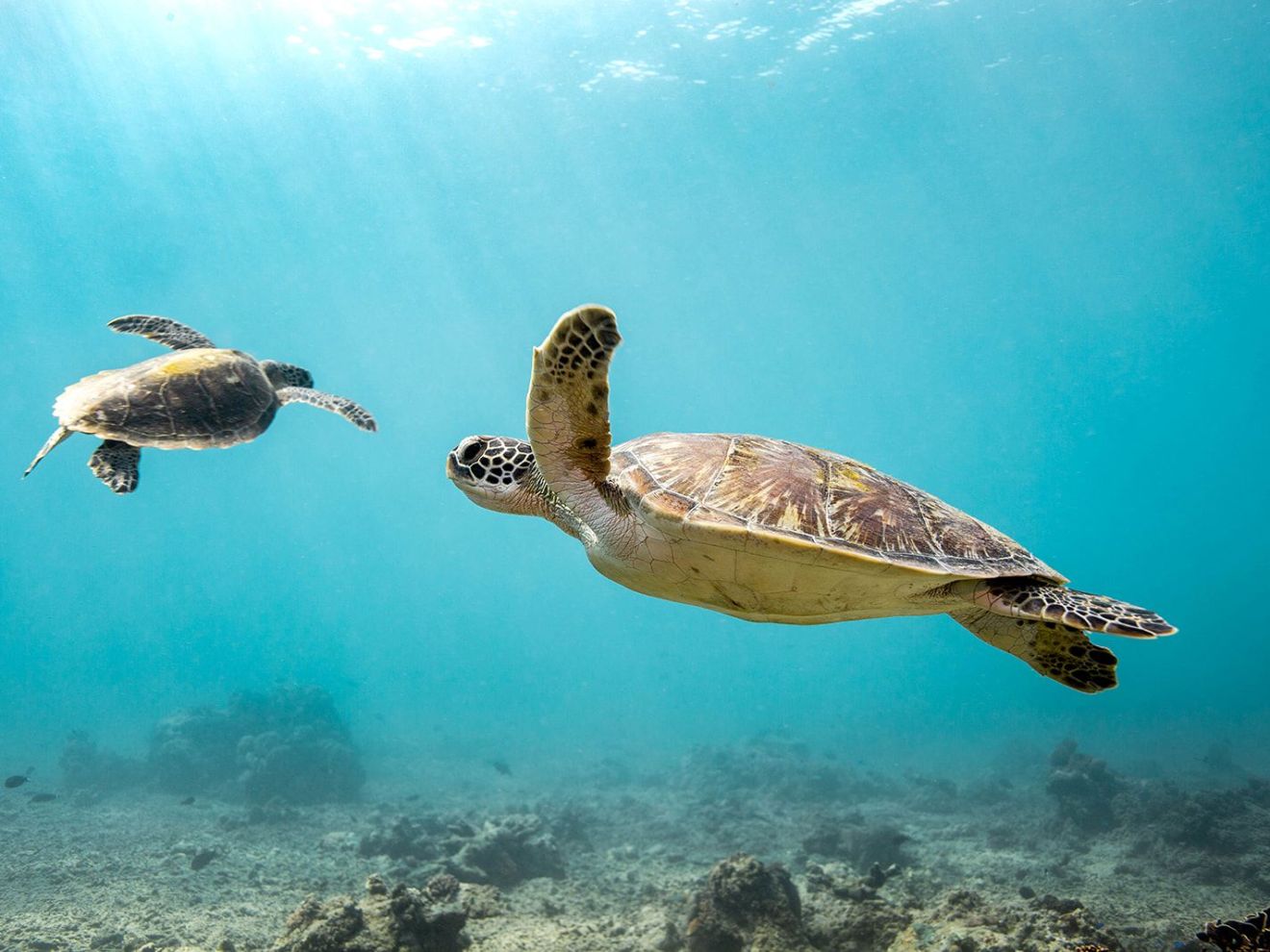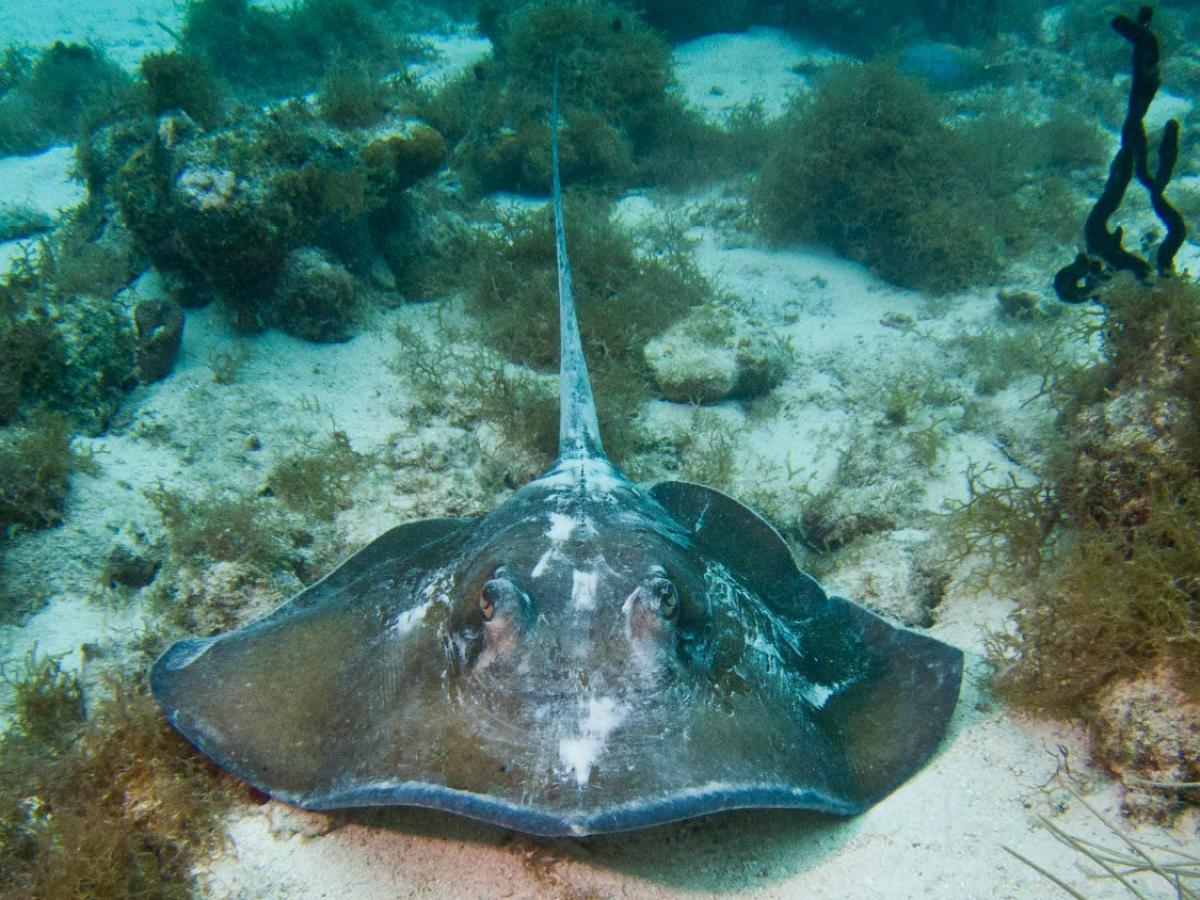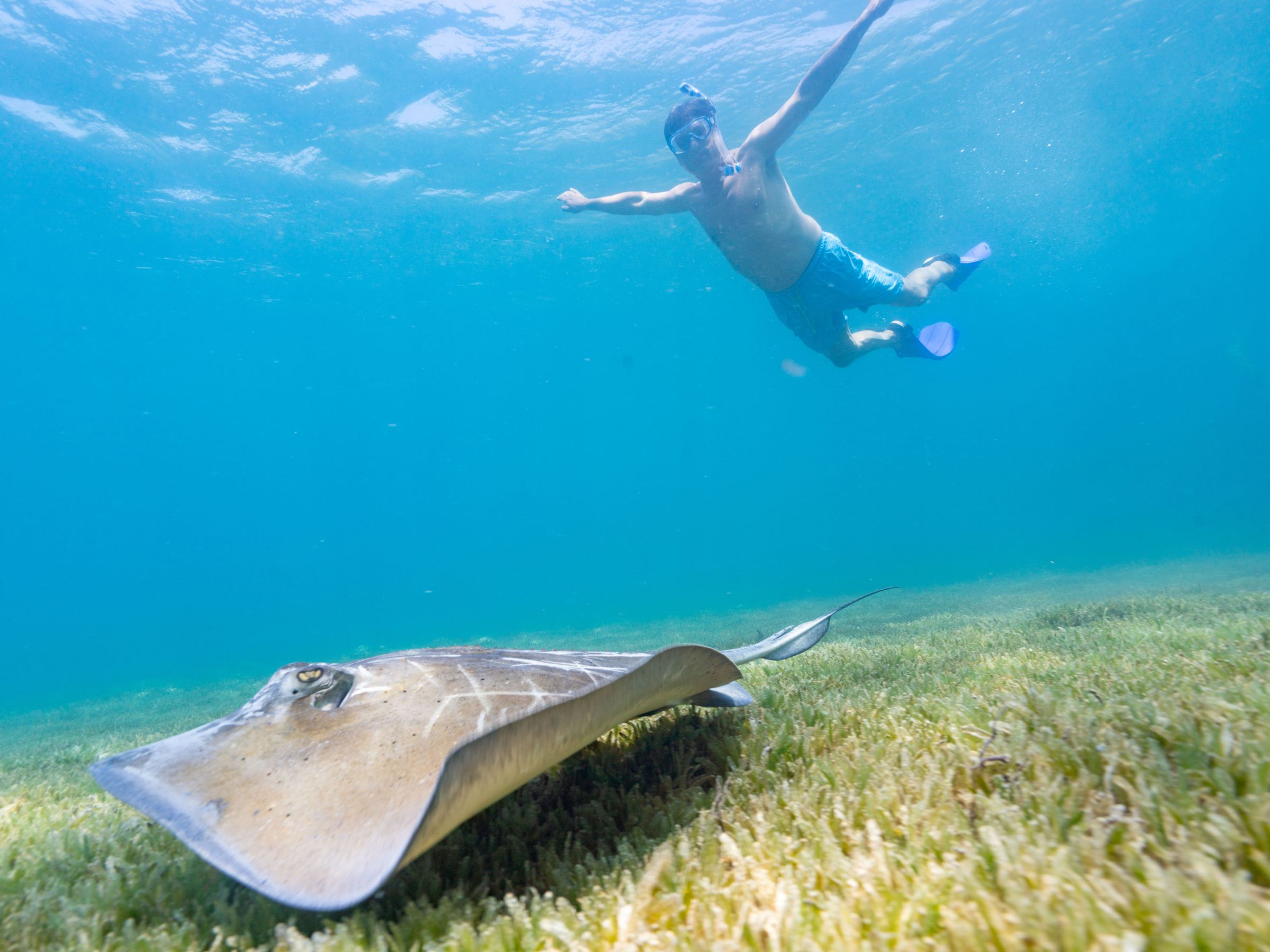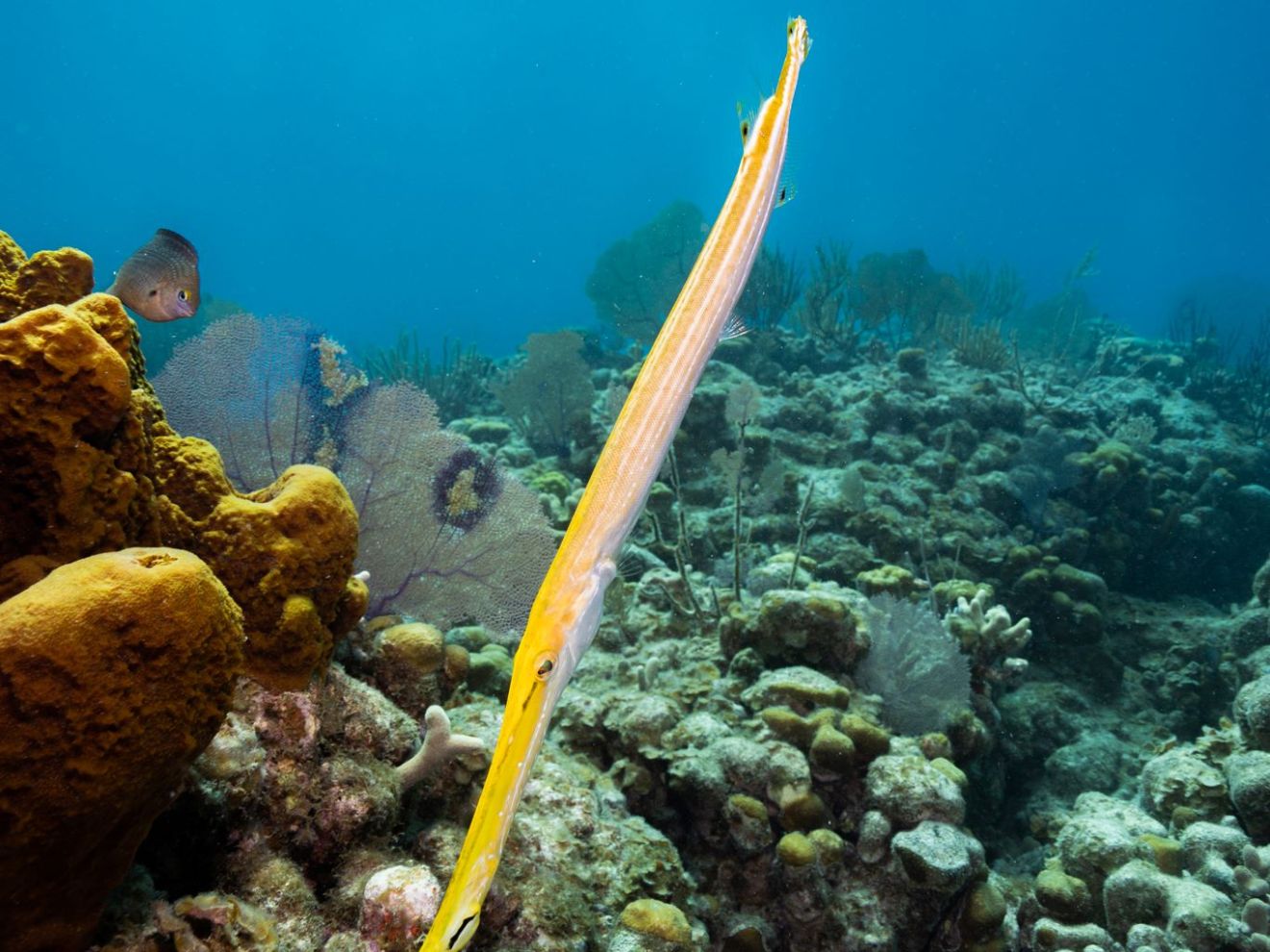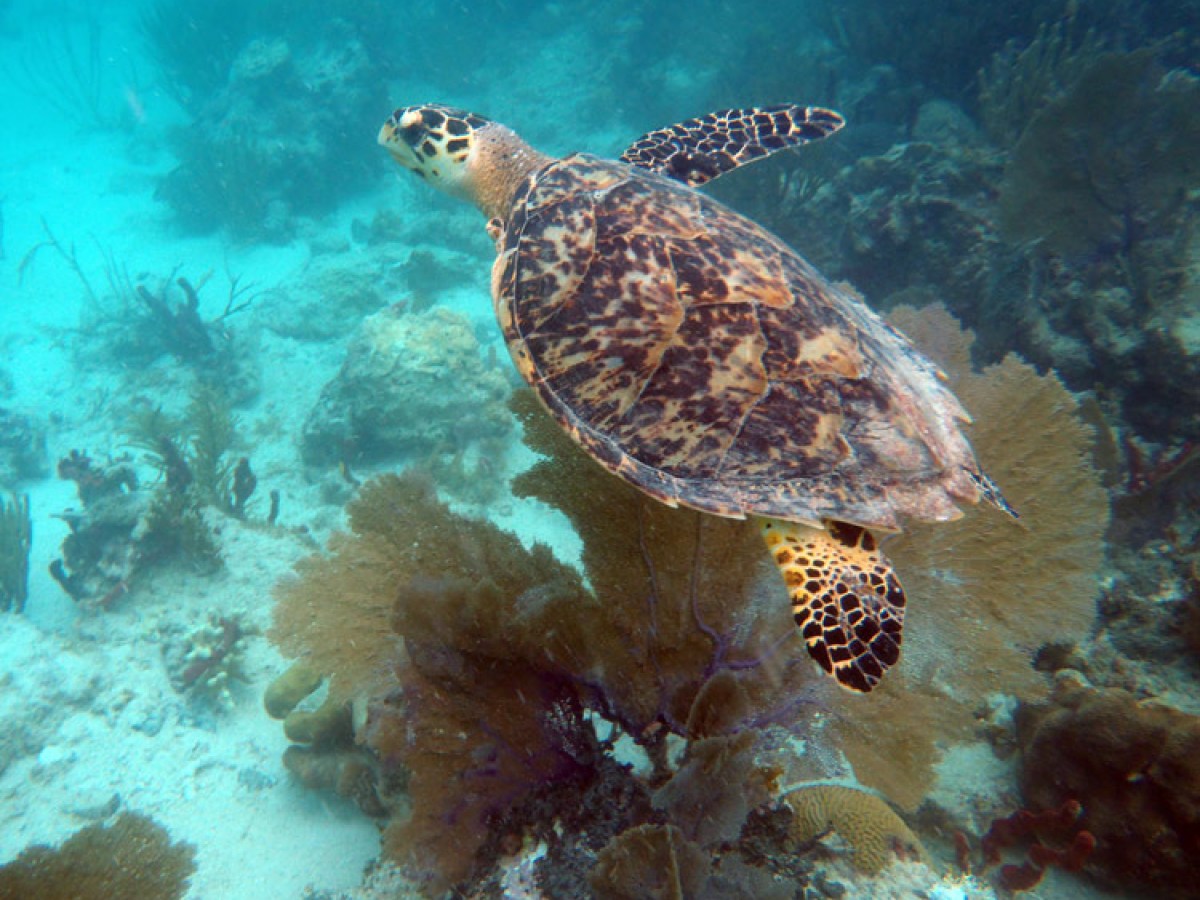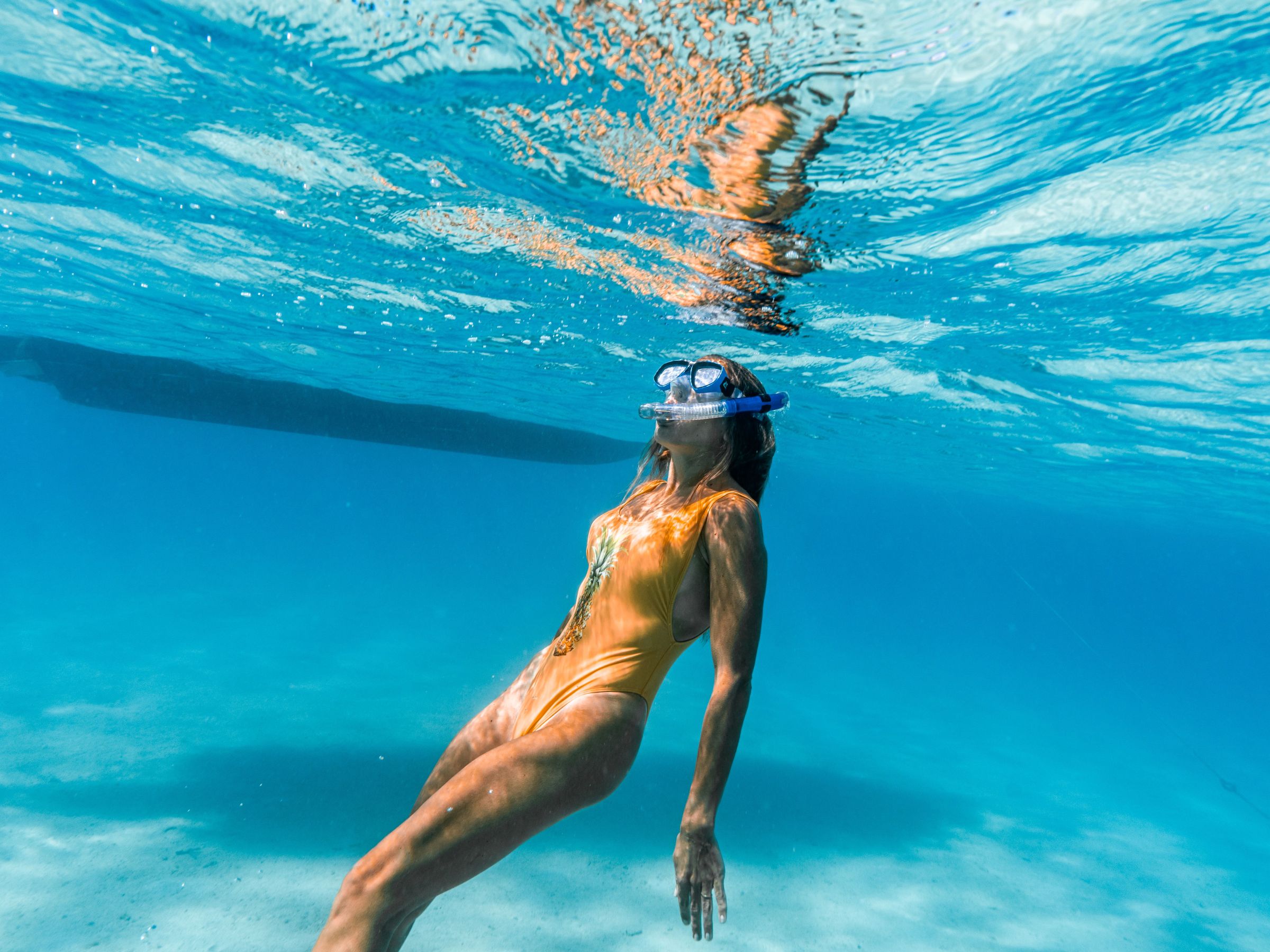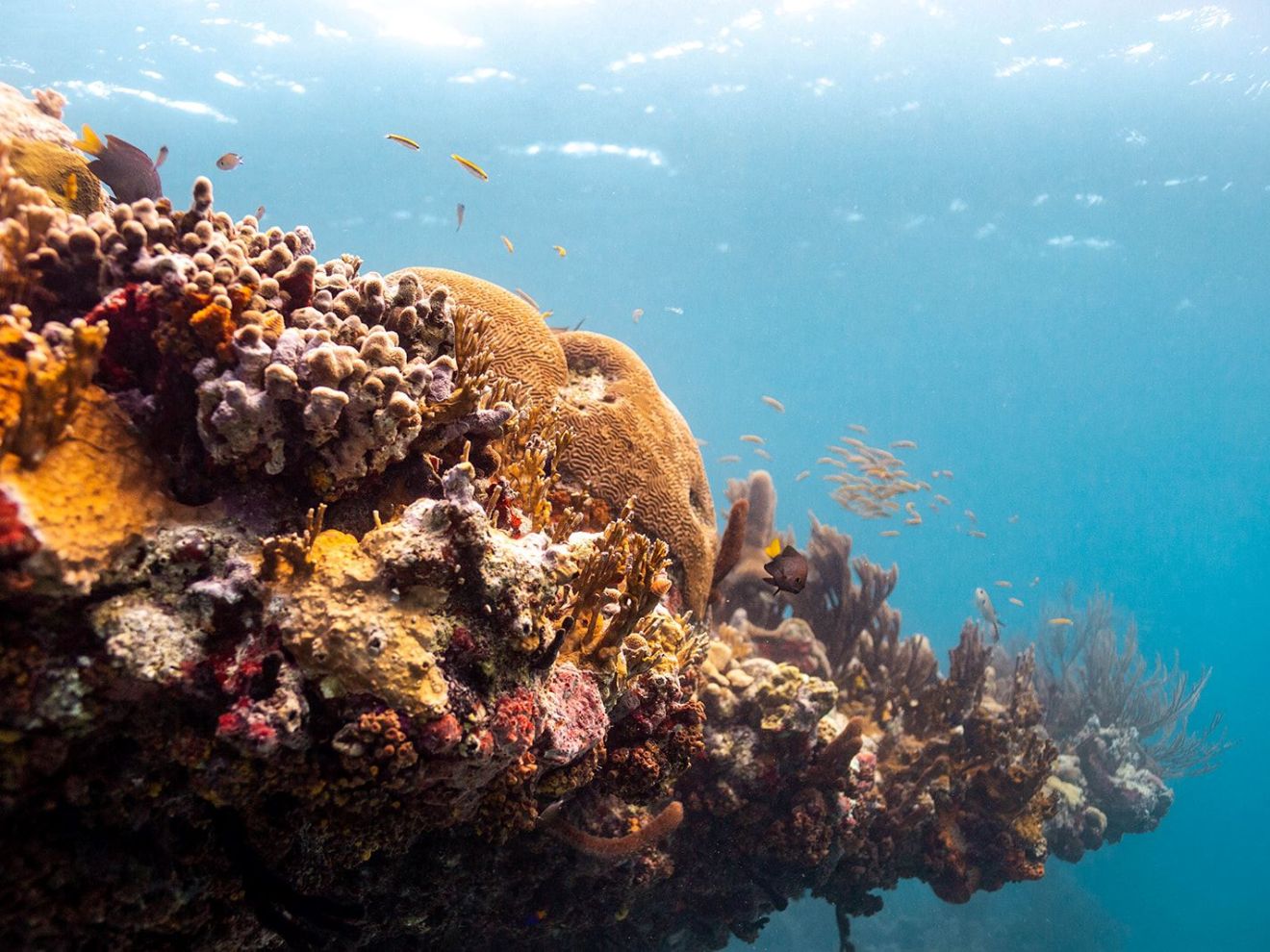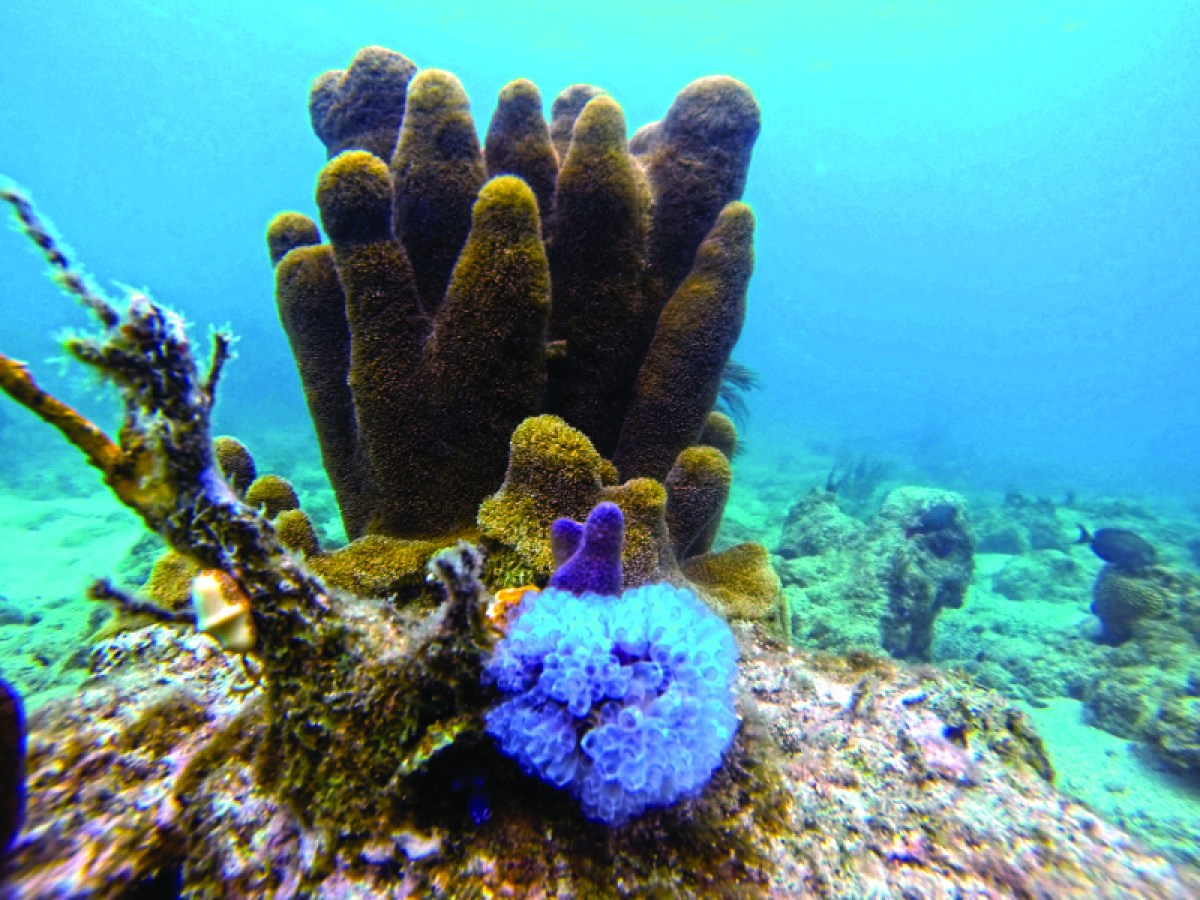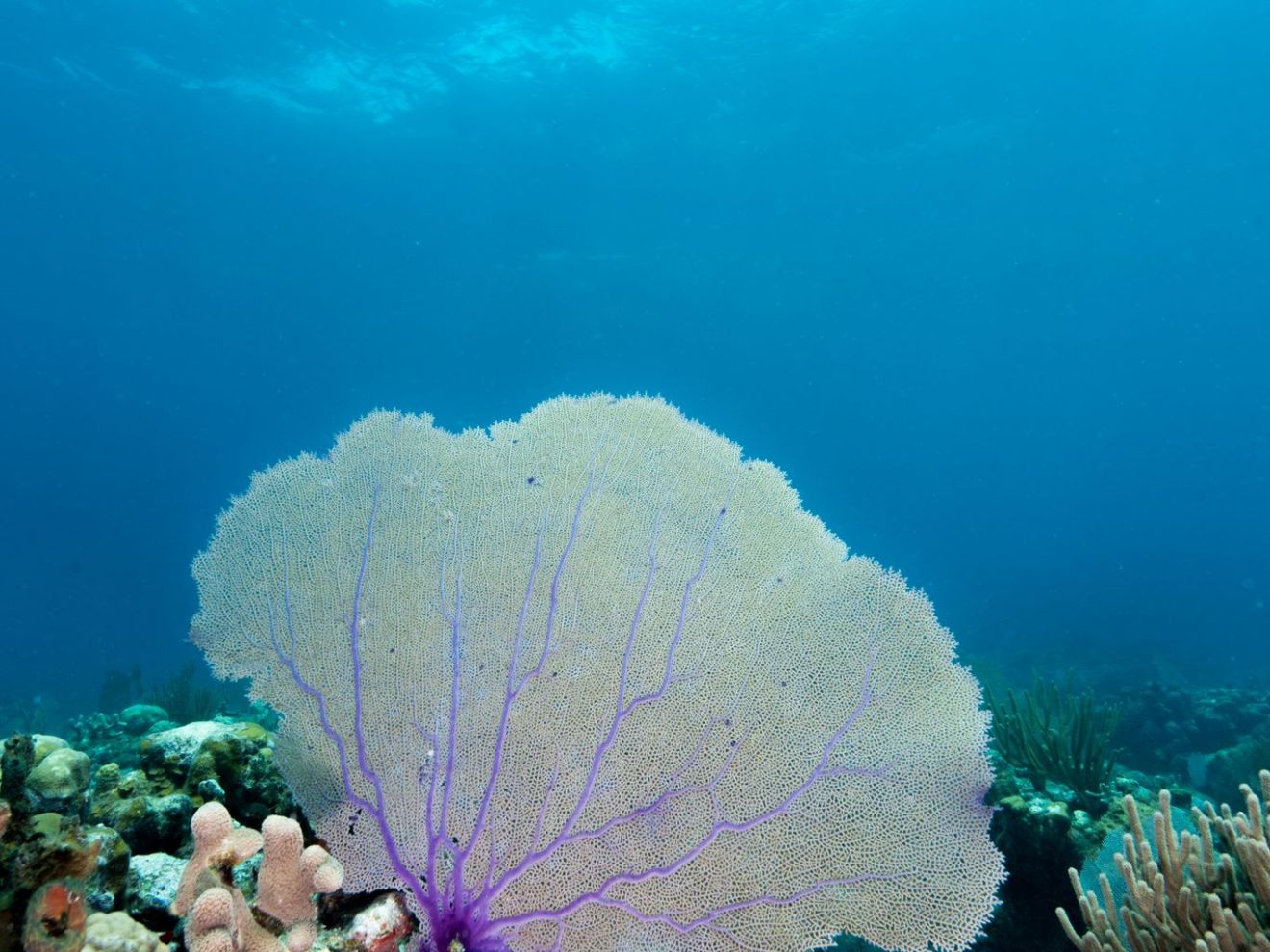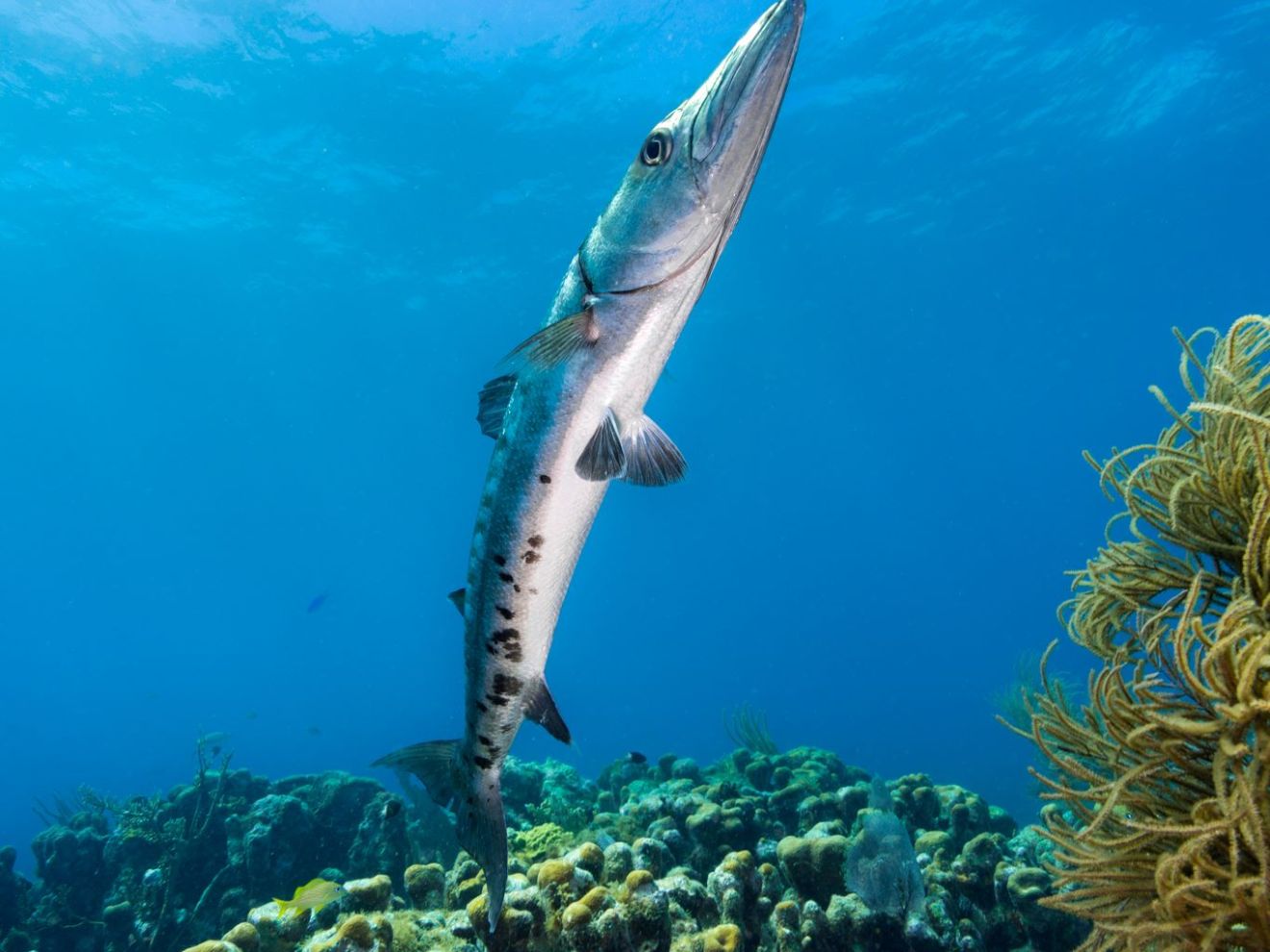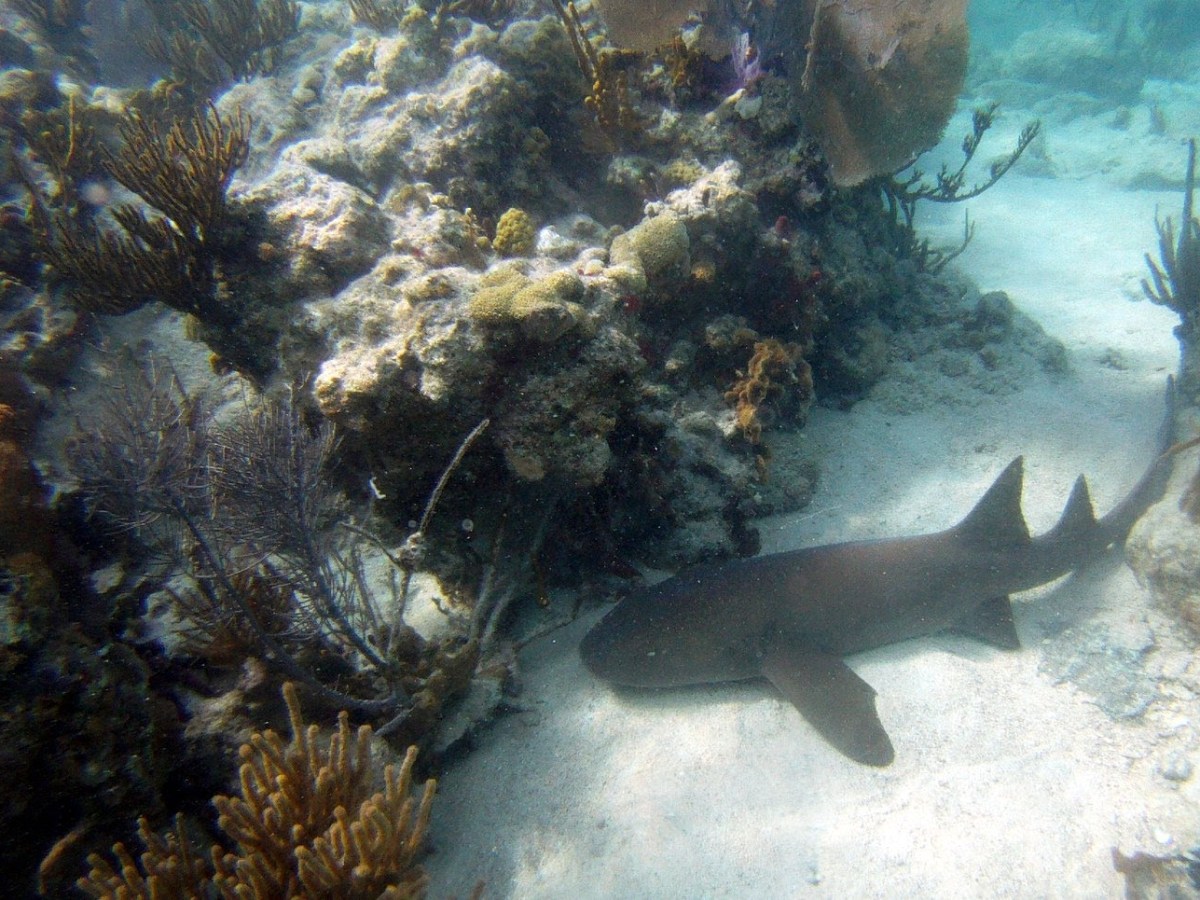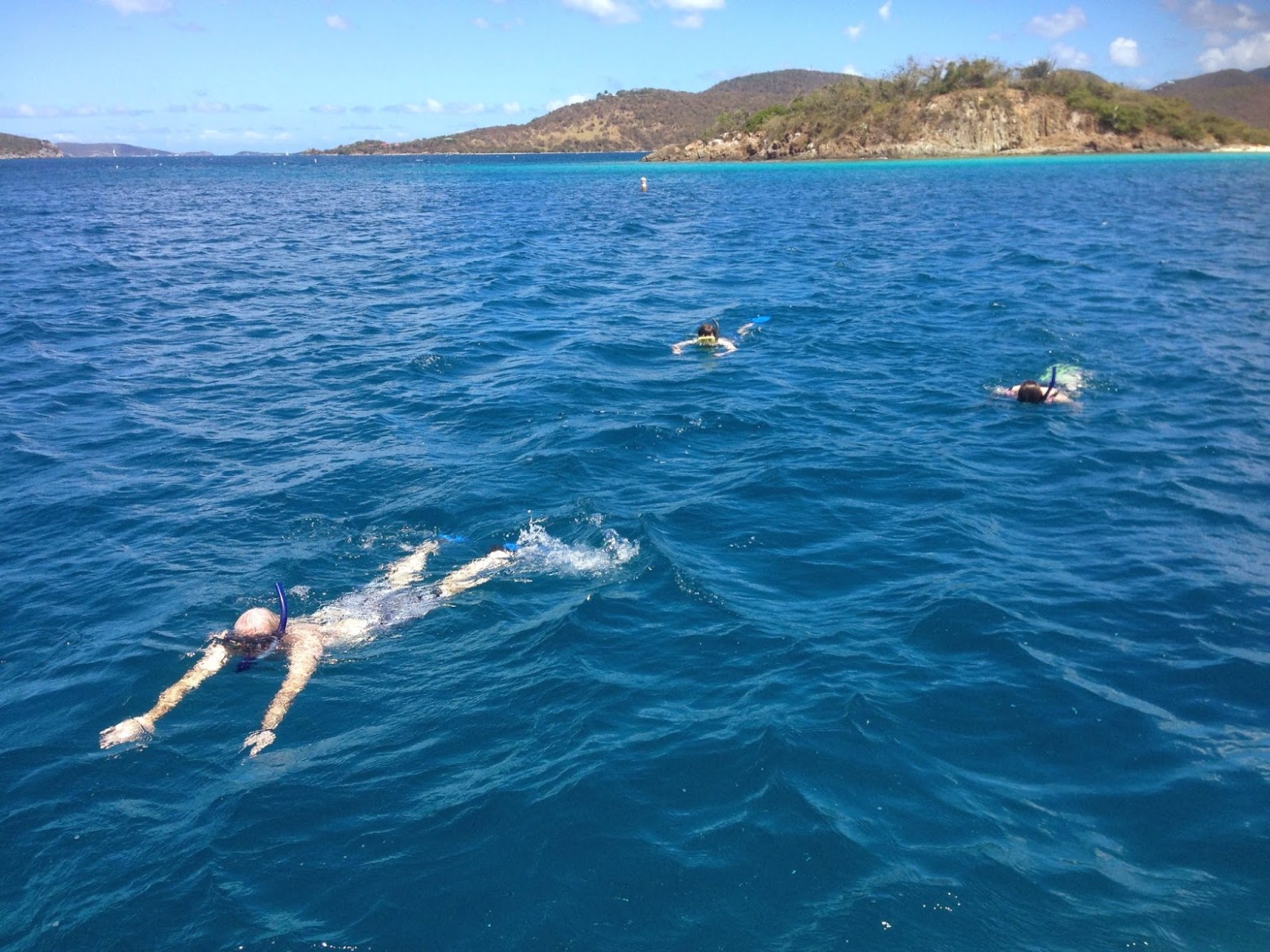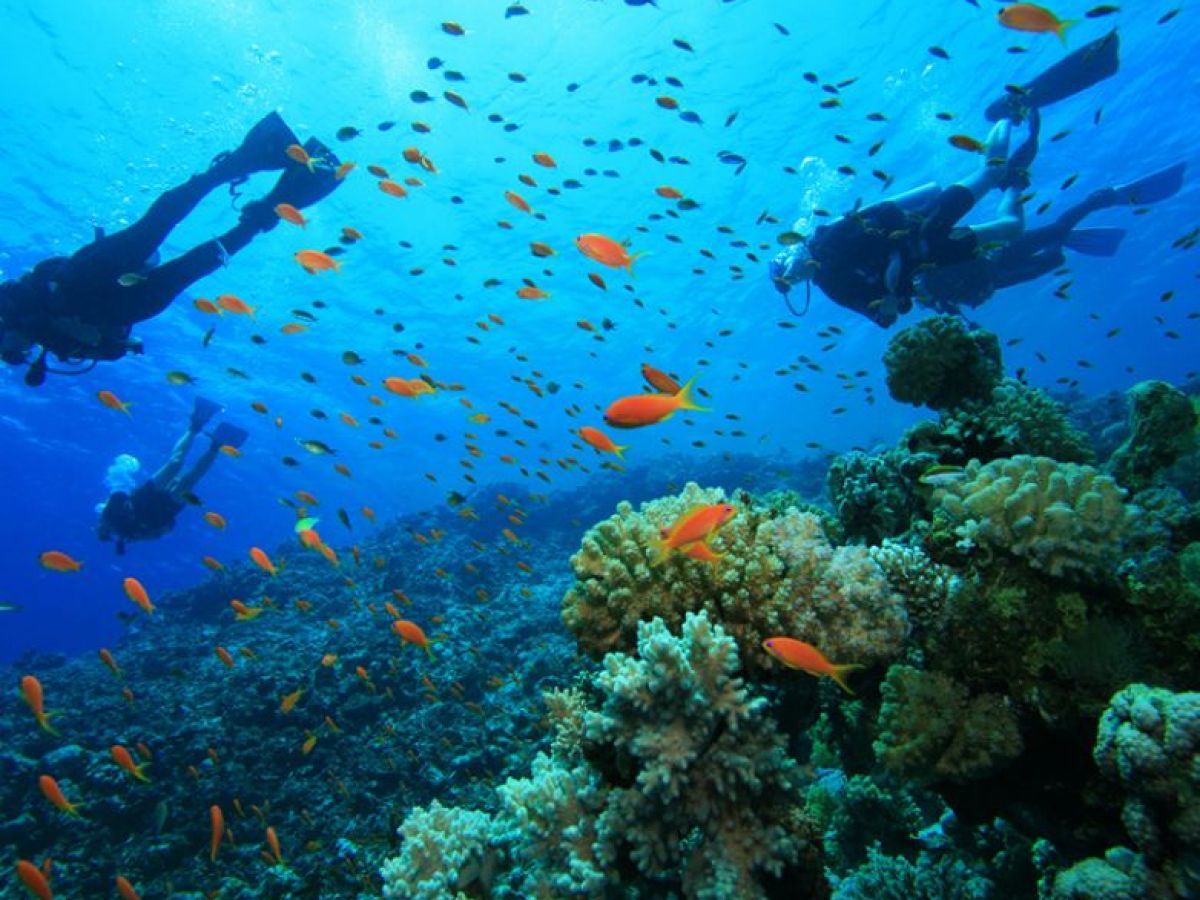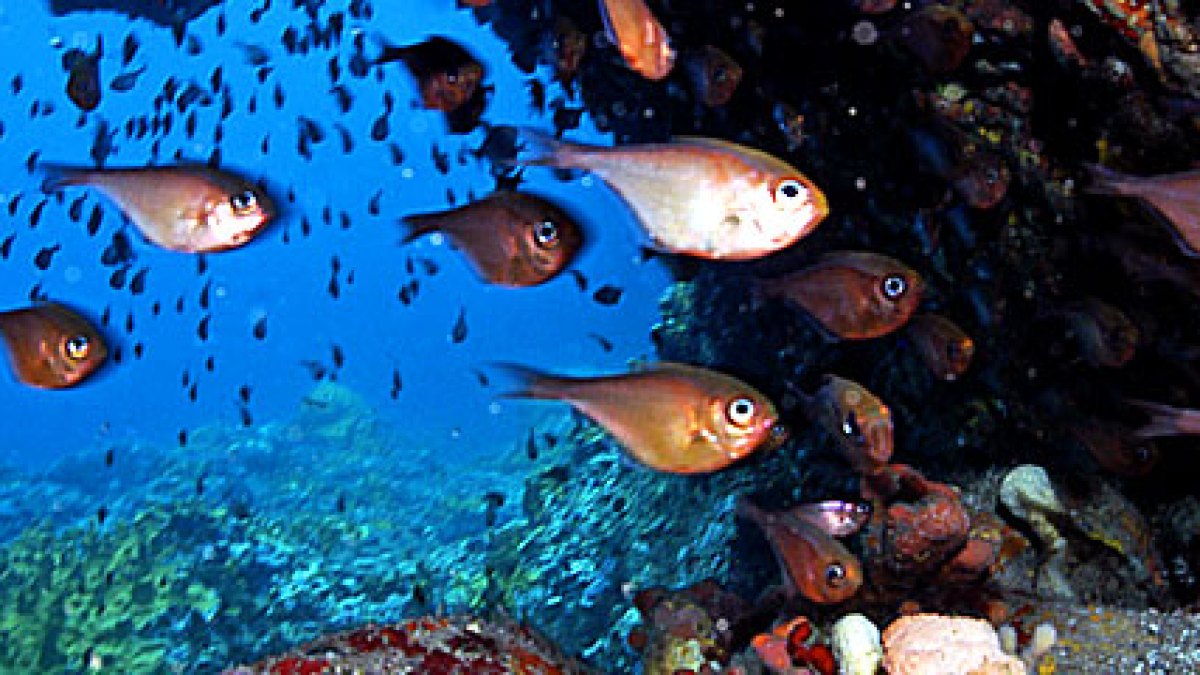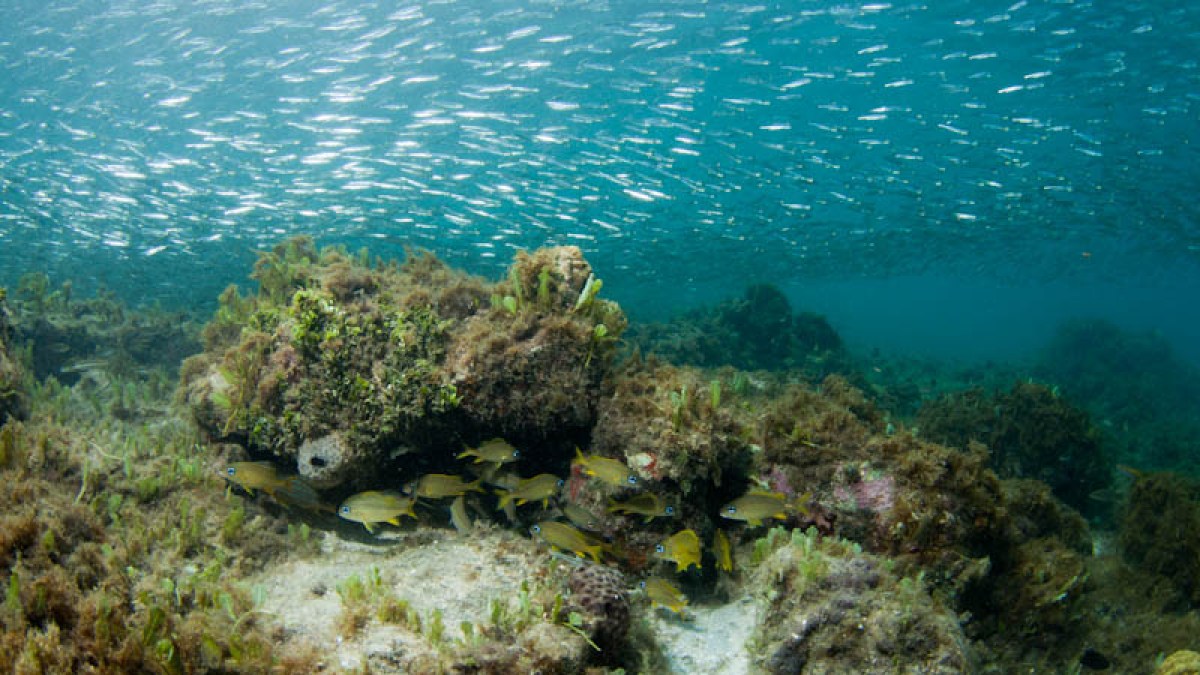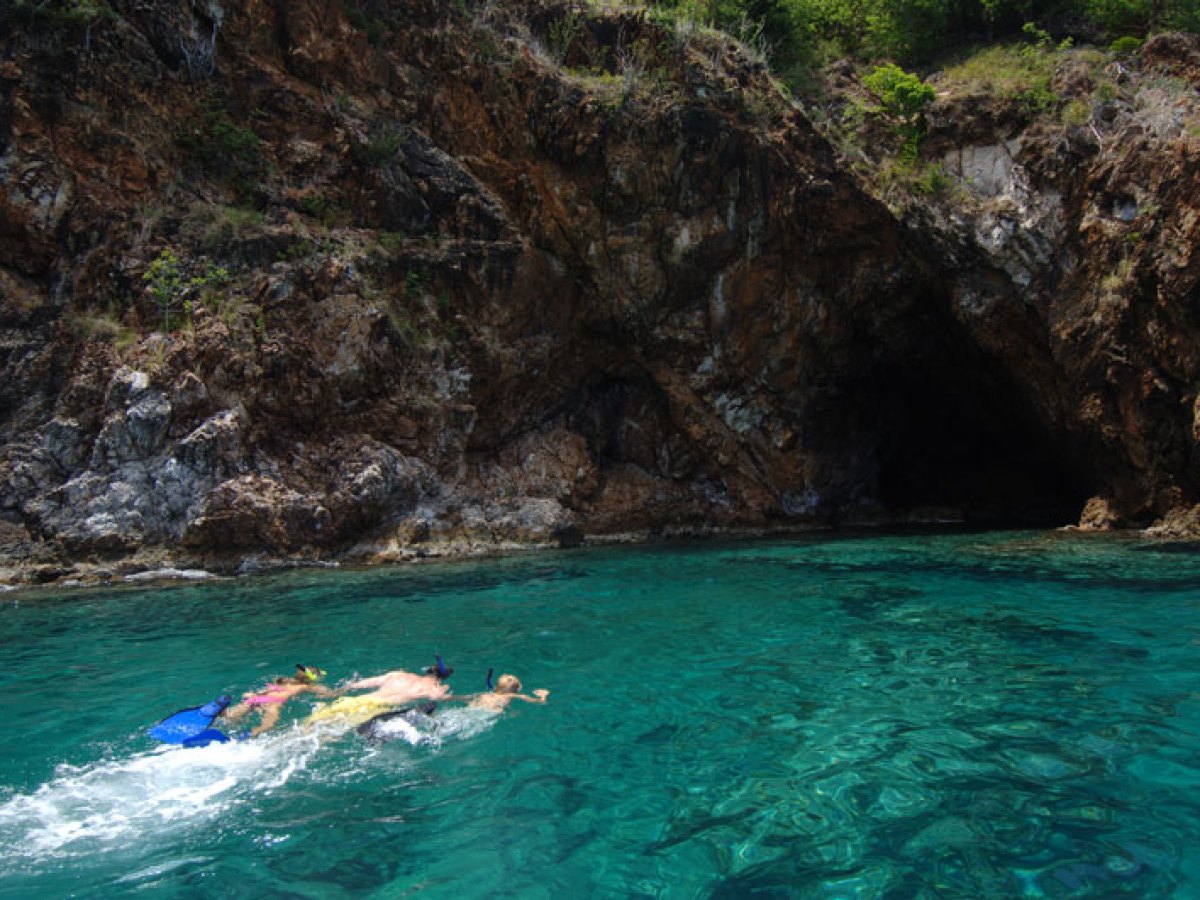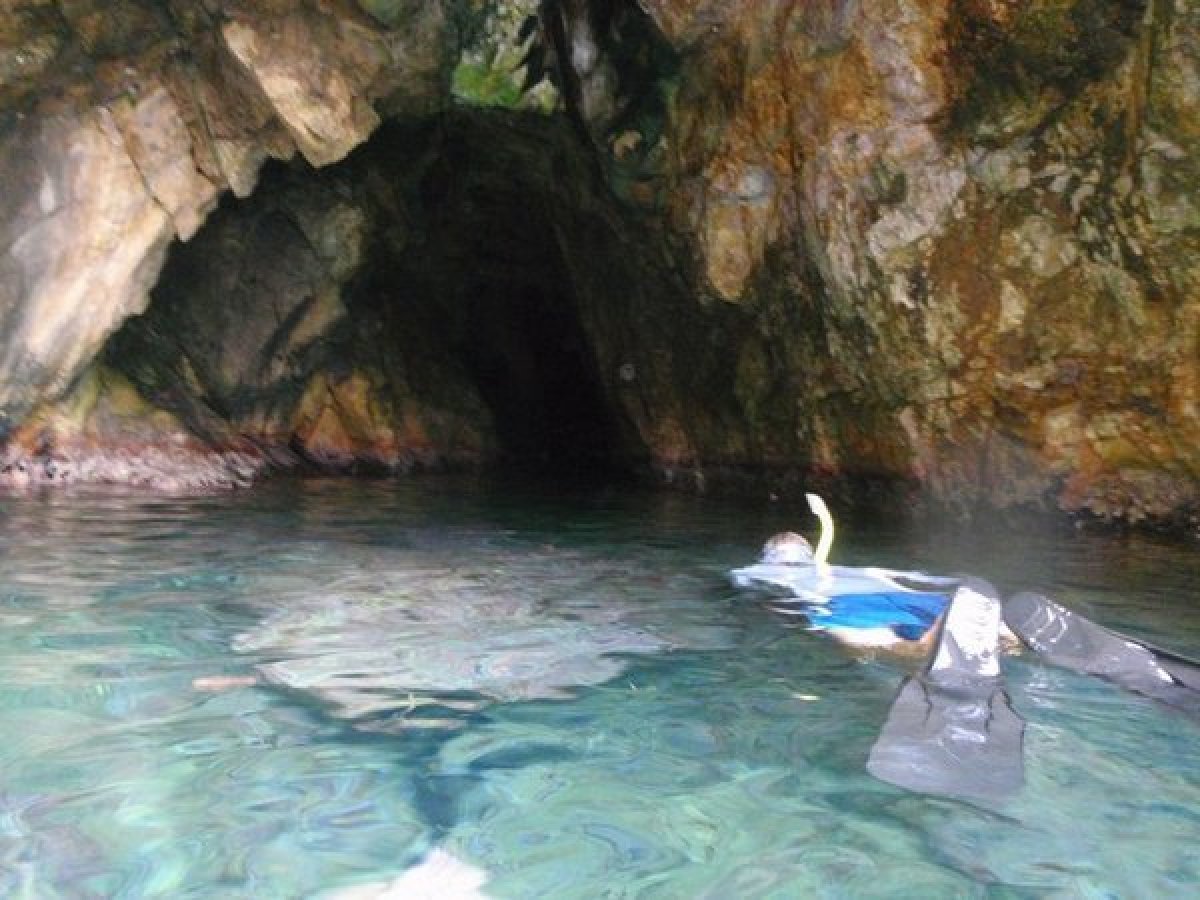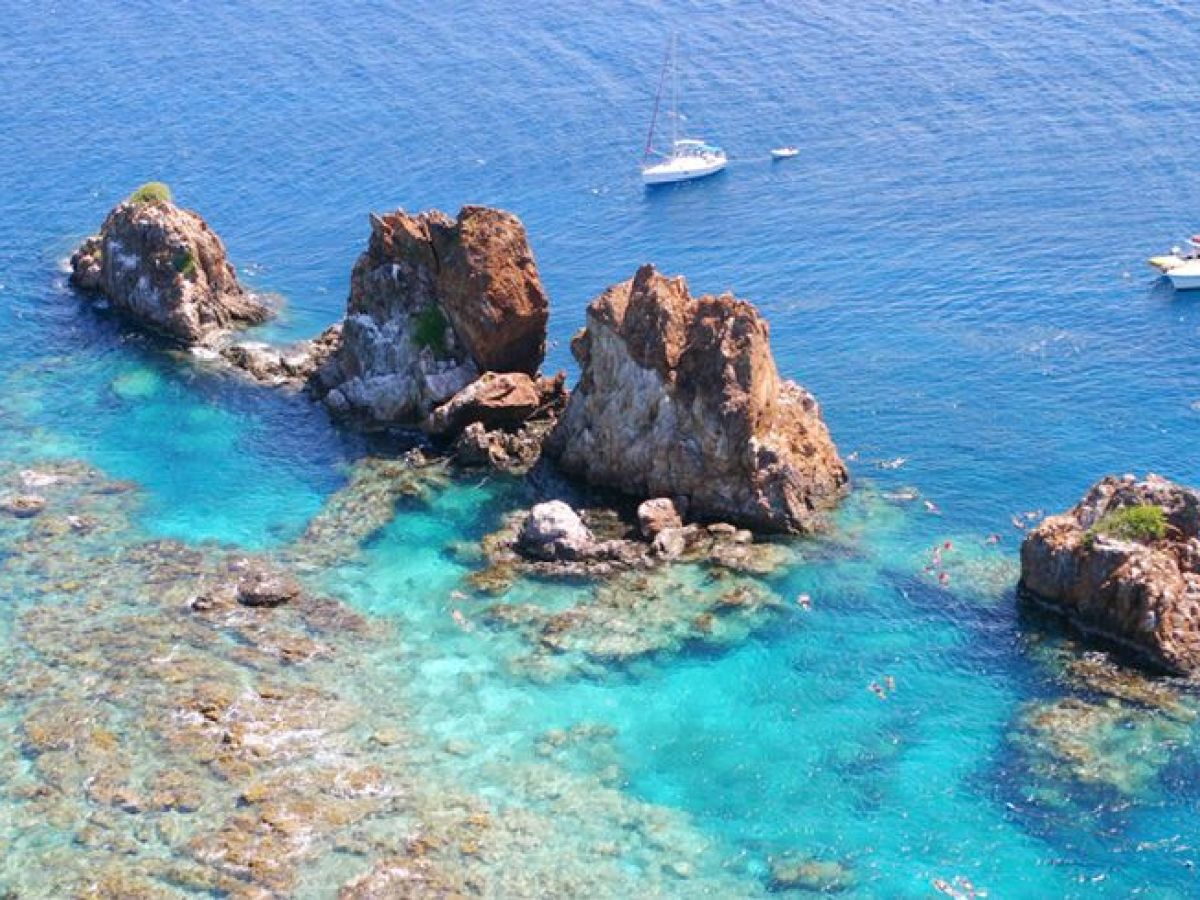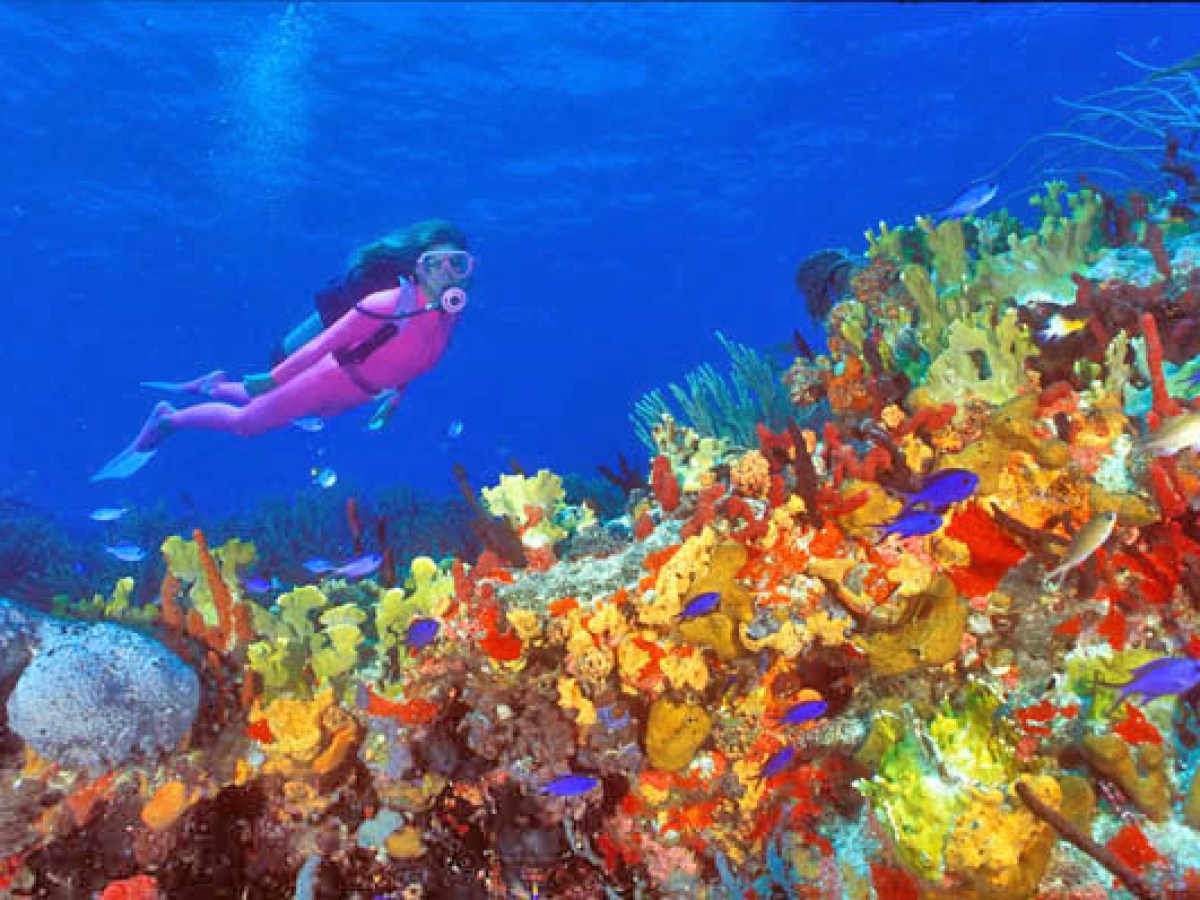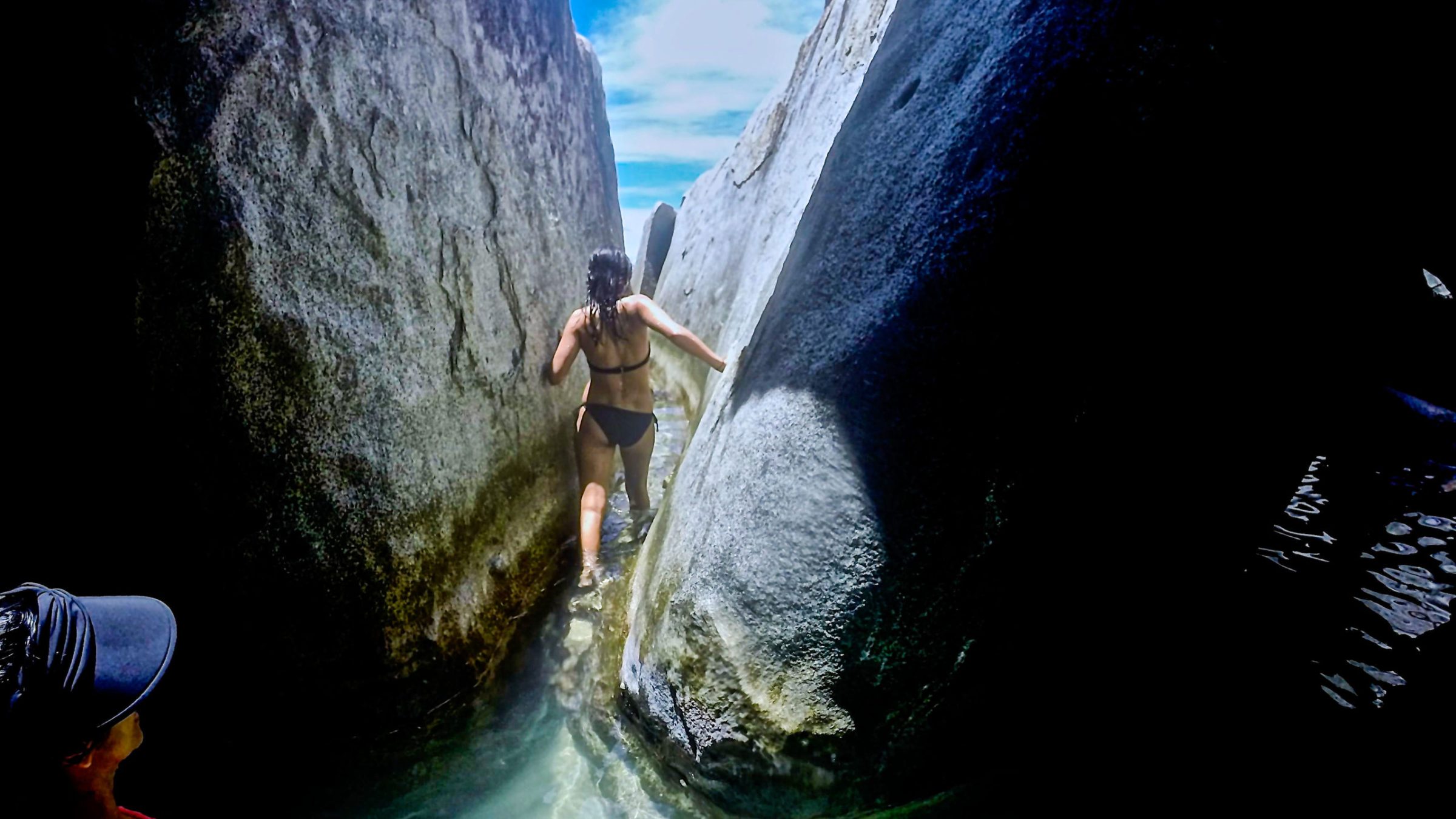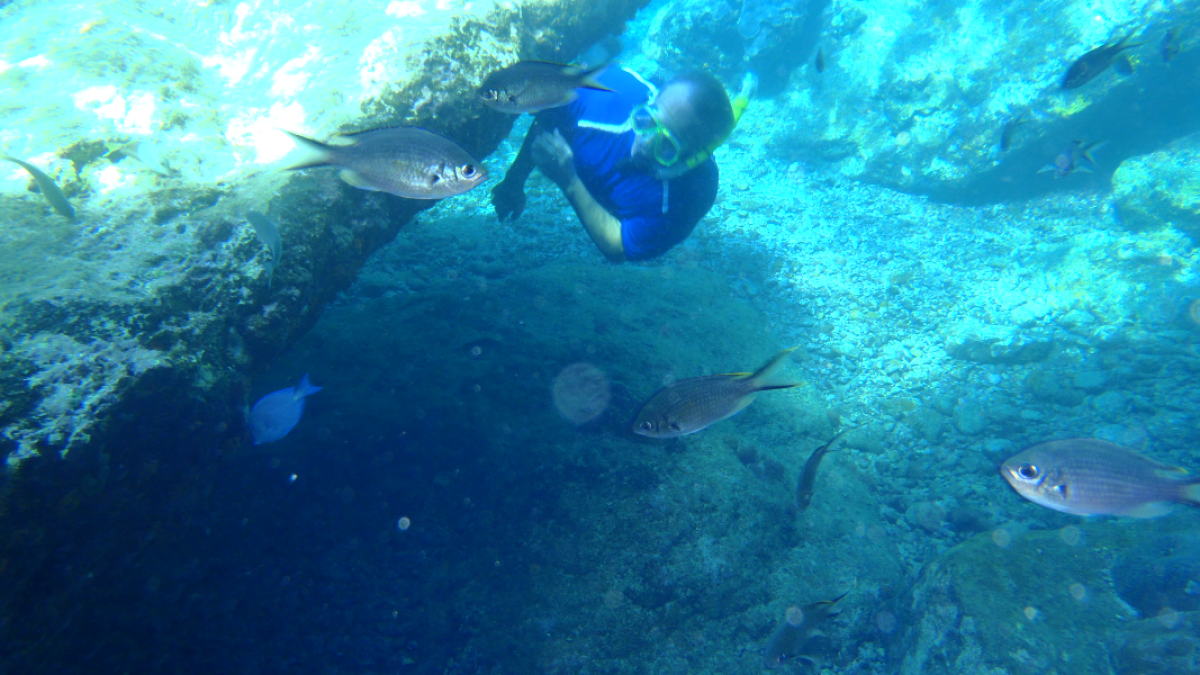U.S. VIRGIN ISLANDS SNORKELING
HENLEY CAY
The largest of the Durloe Cays, Henley is located off of the northwest corner of St John, near Caneel Bay. This uninhabited tropical islet is only 300 yards in diameter and sits less than a half mile off Turtle Bay on St, John. Henley is a nice shallow site with lots of colorful coral and an abundance of fish species.
LOVANGO / CONGO CAYS
Two small islands northwest of St John near Carval Rock, the area between Lovango and Congo is teeming with a wide range of marine life and growth. Often times boaters will see dolphin investigating the activity around this area. This is typically a very private area that is often overlooked. The south side of Lovango is well worth a stop too.
WATERLEMON CAY
Offering some of the best snorkeling in the USVI, Waterlemon Cay is a small island off the north shore of St John. Only accessible via boat or after a long hike and sometimes a difficult swim across a channel, Waterlemon has an wide variety of Coral formations, plant life and many different types of fish. It is not unusual to view Sea Turtles, Octopus, Star Fish, Squid, and Sting Rays in addition to many schools of fish.
WHISTLING CAY
Off the north coast of St John, Whistling Cay is accesible only by boat. A good location for snorkeing or diving as both the northwest and southwest sides are teeming with life. The northwest is a bit deeper, so clear bright conditions are needed.
CHRISTMAS COVE
Located on the west side of Great St James, Christmas Cove is a well protected haven for sailors and yachtsmen from both St Thomas and St John. Some of the area dive boats also frequent this area, as testament to its virility but also a potential drawback because it can be crowded.
HAULOVER BAY
One of the premier, yet somewhat unknown, snorkeling spots on St John, Haulover North is located on the far east side of the island. Haulover got its name from the fact that many years ago in rough conditions, boaters would “haul over” their boats from one side of the low land mass to the other more protected inner bay. In addition to the many variety and sizes of coral formations, snorkelers can often spot Hawksbill Turtles, Nassau Grouper, large Barracuda (it is not uncommon to see the famed 6′ Cuda at Haulover usually sitting between the formations of large Brain Coral), and Parrotfish. One caveat for snorkelers, Haulover can be treacherous when the seas are rough. Also, there are no moorings or place to anchor so someone will have to stay with the boat!
BOOBY ROCK
Off Salt Pond Bay on the south shore of St John, this small solid rock formation is popular with the Booby Birds, thus the name. Spotted Eagle Rays, Sea Turtles and Nurse Sharks are common here among the many coral formations.
BRITISH VIRGIN ISLANDS SNORKELING
SANDY SPIT / GREEN CAY
Located on the Northeast side of Jost Van Dyke. This area is an idyllic hangout if you don’t want to stray too far from St John and plan to spend time at Jost during your day trip. Great snorkeling, moorings and an anchorage that is easily accessible and a great beach to hang out on. One of the most photographed areas in the Virgin Islands.
THE CAVES
Lending to the continuing legend of buried treasure, the famous Caves are only about four feet deep in most spots, although they drop off to 40 feet near their entrance. Typically explored by snorkeling, the Caves are fascinating rock formations. The variety of tropical fish, the life-encrusted walls of cup corals and sponges with their brilliant colors, and the abundant waterfowl, including pelicans, tropic birds and luaghing gulls make this a popular area. The northern-most Cave stretches 70′ back into the island. Bring an underwater flashlight to see the gorgeous purples, rusts and deep veins of the above water walls. Underwater, it’s like a night dive, with the coral polyps extending their tentacles to feed. At the end of the cave is a small room.
THE INDIANS
The Indians, nearby rock pinnacles off Pelican Island (near Norman Island) are reminiscent of an Indian bonnet. This is a not-to-be-missed dive site, which also offers great snorkeling. Here in the shallow “fish bowl,” swirling clouds of bait fish are pursued by jacks and snappers below and dive-bombed by pelicans above. See various corals, such as elkhorn, brain and star, and sponge laden ledges, along with sea fans and gorgonians. Trumpetfish, black durgons and blue chromis are abundant here. Snorkelers may also see large coral heads with elegant trunkfish, bold parrotfish and orderly schoolmasters. Experienced snorkelers can actually swim under part of the rock formation to the other side.
THE WRECK OF THE RHONE
At the heart of a diving and snorkeling paradise formed by the line of small islands marking the southern boundary of the Sir Francis Drake Channel, Cooper Island, together with Salt Island and Ginger Island on each side, has 11 of the 50 or so best known sites in the BVI, including the Wreck of The Rhone, Alice in Wonderland and Cistern Point extends as a rocky point and coral reef ridge off Cooper Island and out to a rock by that name. Both a great snorkeling site and sensational shallow dive site at the southern end of Manchioneel Bay, Cistern Point has a dinghy mooring (a rope tied between two moorings) easily accessible to boaters who want to dinghy over. A great site for free divers as well.
THE BATHS
The Baths are a stellar natural attraction on Virgin Gorda of the British Virgin Islands, with exotic pools and grottoes formed by giant boulders strewn across sand beaches. More of an attraction for hikers and/or sightseeing since the snorkeling is not great due to the large number of tourists and cruisers who visit this area. About a 1-1.5 hour ride on a calm day from Cruz Bay makes this a trip for the determined boater.
MONKEY POINT
Off Guana Island (between Tortola and Virgin Gorda) Monkey Point marks the sea passage along Tortola’s Ocean Coast and has a small cove for day stops with moorings with a beach and good snorkeling.

